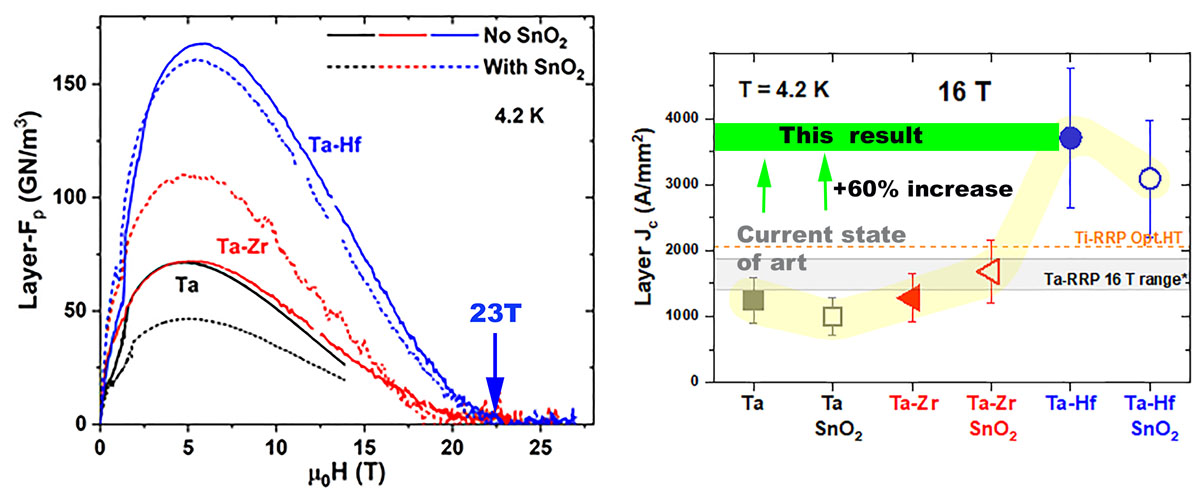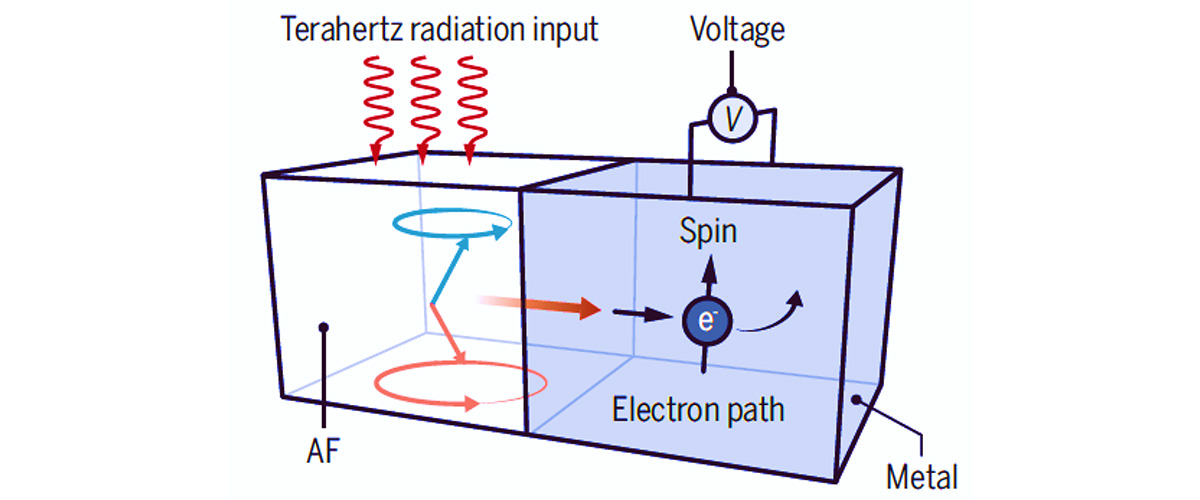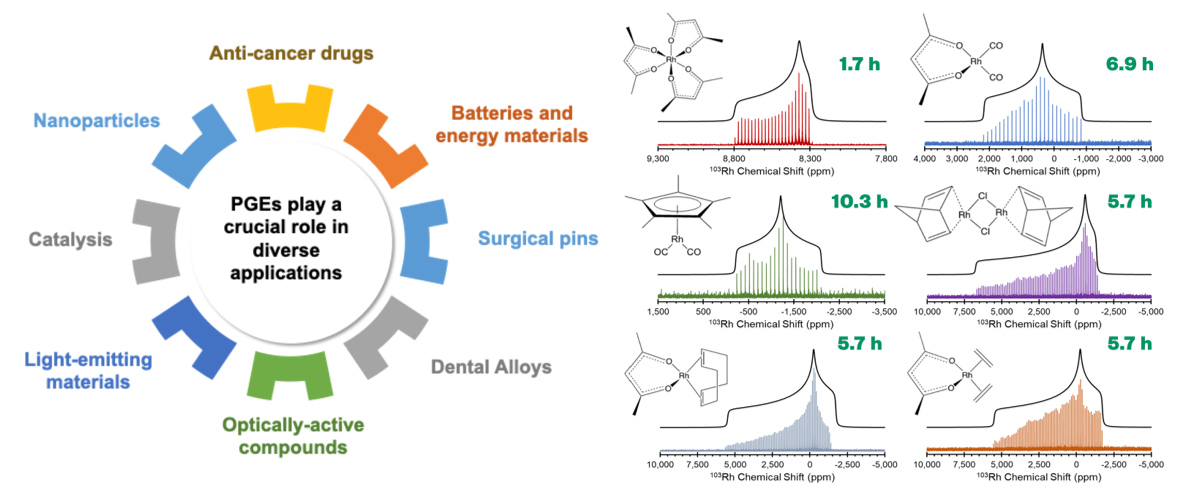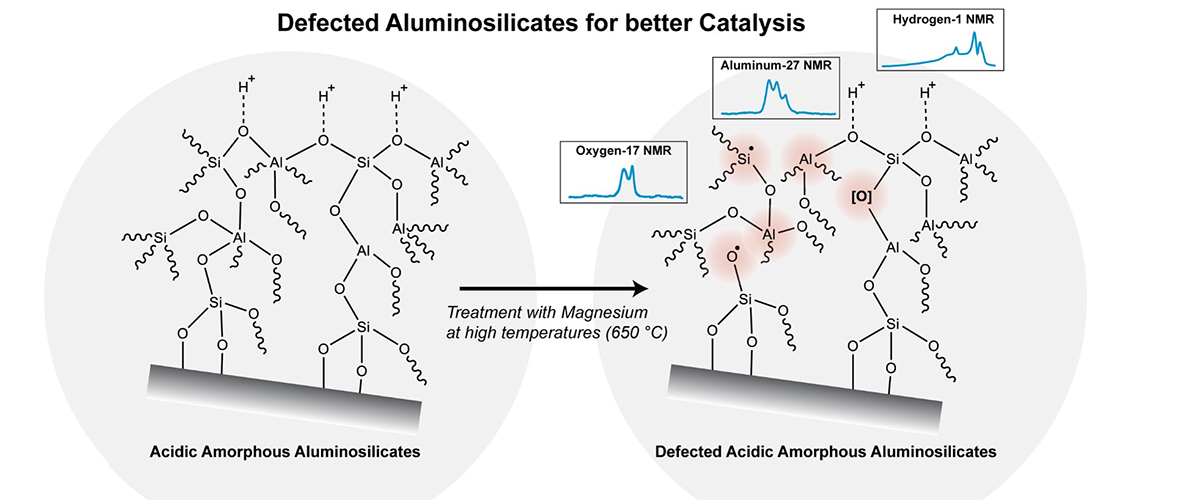What did researchers discover?
MagLab researchers have found that adding the element Hafnium (Hf) to a Niobium (Nb)-Tantalum (Ta) base alloy and forming a superconductor Nb3Sn after reaction with Tin (Sn) at high temperatures of 670°C leads to tremendous improvements in the electrical current carrying ability (Layer Jc) of this conductor wire by 60% at operating magnetic fields of 16T at temperatures of 4.2K.
Why is this important?
The high increase in the current carrying capacity of superconducting Nb3Sn wire is of particular interest to NMR researchers, MRI clinicians, and scientists pursuing next-generation accelerators and nuclear fusion. In particular, this research result specifically indicates that future 16T dipole magnets for the next-generation Future Circular Collider (FCC) planned to be constructed in CERN can be fabricated using this new Nb3Sn conductor, rather than the riskier high-temperature superconductors.
Who did the research?
Shreyas Balachandran1, Chiara Tarantini1, Peter J. Lee1, Fumitake Kametani1,2, Yi-Feng Su1, Benjamin Walker1, William L. Starch1, and David C. Larbalestier1,2
1National magLab, Florida State University; 2Dept of Mechanical Engineering, Florida State University
Why did this research need the MagLab?
The conductor was developed in-house by researchers at the MagLab. In addition, characterization of the conductors at high fields up to the full superconducting range of Nb3Sn (26T) would not have been possible elsewhere.
Details for scientists
- View or download the expert-level Science Highlight, Hafnium greatly improves Nb3Sn superconductor for high field magnets
- Read the full-length publication, Beneficial influence of Hf and Zr additions to Nb4at%Ta on the vortex pinning of Nb3Sn with and without an O source, in Superconductor Science and Technology
Funding
This research was funded by the following grants: G.S. Boebinger (NSF DMR-1157490, NSF DMR-1644779); DOE (DE-SC0012083 )
For more information, contact Lance Cooley.






